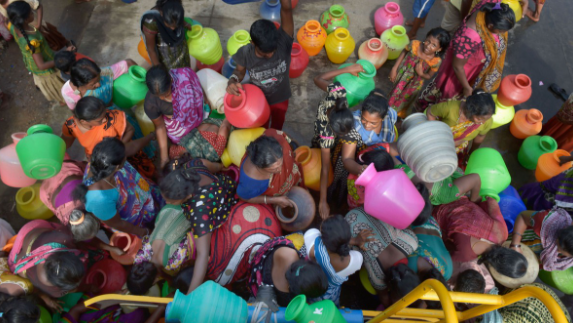For safe and constant supply water, the government must promote community-based water conservation, push citizens to harvest rainwater, and stop destroying wetlands and catchment areas.
On World Water Day, there is little to celebrate. A recent United Nations report suggests that there is a global water crisis due to population growth, the nature of economic growth, the climate crisis, land-use change, inefficient water use, and weak planning and enforcement. The report also pointed to the need for measures to help more than three billion people who either lack access to safe drinking water or face periodic water shortages.
To buy our online courses: Click Here
India, unfortunately, is not an outlier. Even 74 years after Independence, over 60% of Indians do not have piped drinking water. The country is the largest extractor of groundwater; it extracts about 24 billion cubic meters of groundwater to cater to 85% of its drinking water needs. On the other hand, the quality of water sources is hardly fit for drinking. According to NITI Aayog, nearly 70% of all fresh water sources are contaminated and 600 million citizens are under water stress.
Read More: Great expectations
The crisis shows how India has disregarded its strong tradition of water harvesting and hasn’t been able to cope with changing demands. In 2019, Prime Minister Narendra Modi launched the Jal Jeevan Mission — a truly ambitious and laudable scheme, which has already shown much progress — to provide drinking water to all rural households by 2024. The same year, the Jal Shakti Abhiyan was launched to campaign for water conservation and security. Both are interlinked — without recharging of groundwater, there will be no piped water. For safe and constant supply water, the government must promote community-based water conservation, push citizens to harvest rainwater, and stop destroying wetlands and catchment areas.




